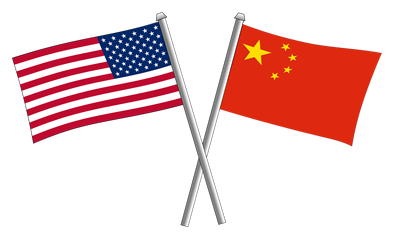
Continent
Asia

Capital
Beijing

Lead Time
3-5 Days

Currency
Chinese Yuan Renminbi CNY

Coverage
Yes

Tax Rate
Up to 20%

Carrier Options
Courier or Freight Forwarder

Documents Required
CIPL, Datasheets, CCC License
China
The Chinese import market is extremely valuable to most industries. and they are the second largest importer in the world, ever so slightly behind the USA.
A whopping 8.6% of the Chinese import was integrated circuits, which includes IT Technology, with their biggest trade partners being in the ASEAN regions (an international organisation that has 10 member countries in Southeast Asia), which is almost double that of the next region, the European Union.
China is considered the biggest economy in the world, and despite the clear allure of the hard and fast-growing Chinese market, it must be considered that importing into China comes with a myriad of challenges and requires a great deal of pre-thought and preparation do so successfully.
Here, we have listed a few key considerations when thinking about taking your technology goods to the Chinese marketplace;
The Chinese culture
The Chinese people are efficient, organised and take a great deal of pride in every aspect of their lives, a culture that cannot be compared to anywhere else in the world. However, their business culture is complex and, as well as the language barrier, can at times affect the ability of international businesses to work closely with Chinese companies - it takes time and patience to build trust and networks within the Chinese market.
It should also be noted that large parts of the economy are closed off to foreign participation, as established competition exists in state-owned enterprises. A good example of this would be Huawei vs Cisco.
China Compulsory Certificate (CCC Licence)
 The China Compulsory Certificate mark, commonly known as a CCC, is a compulsory safety certification for many products manufactured, imported, sold or used in the Chinese market. It was implemented on May 1, 2002 and became fully effective on August 1, 2003.
The China Compulsory Certificate mark, commonly known as a CCC, is a compulsory safety certification for many products manufactured, imported, sold or used in the Chinese market. It was implemented on May 1, 2002 and became fully effective on August 1, 2003.
The CCC is broken down into four categories and is provided by the CNCA (Certification and Accreditation Administration of the People's Republic of China);
- CCAP (China Certification Centre for Automotive Products) products in the automotive area
- CSP (China Certification Centre for Security and Protection) certifies security products, forensic technology and products for road safety
- CSCG (China Safety Global Certification Centre) for safety glass
- CEMC (China Certification Centre for Electromagnetic Compatibility) covers all electronic products regardless of use
The CCC certificate and the Permission of Printing, which allows the manufacturer of the goods to add the mark of CCC to their products, must go through a lengthy audit process. This audit is carried out by one of a few nominated companies; it can take around 6 months to complete and includes a one-day factory audit. Each device made by a manufacturer must be tested separately.
Goods without the CCC certification are not permitted into China under any circumstances, and photographic proof of certification of the goods must be produced prior to goods shipping.
USA - China Trade War
 The trade war between China and the USA is well documented and is having a measurable financial effect on the Chinese export and import market, with President Trump implementing further tariffs and trade barriers on China.
The trade war between China and the USA is well documented and is having a measurable financial effect on the Chinese export and import market, with President Trump implementing further tariffs and trade barriers on China.
Day-to-day, the trade war directly impacts businesses trying to trade in the Chinese market. Any IT technology which is imported into China manufactured in the USA (Country of Origin = USA), carries an additional 59% duties as of April 07 2025 but this is an ever changing situation.
Mouse and Bear has extensive experience in working with IT businesses to import their goods into the Chinese market. Our Importer of Record services ensure that international enterprises are able to reach the largest economy in the world.
Please contact us for further information. Email iorsolutions@mouseandbear.com, call 01935 848526 or fill out the enquiry form below.



